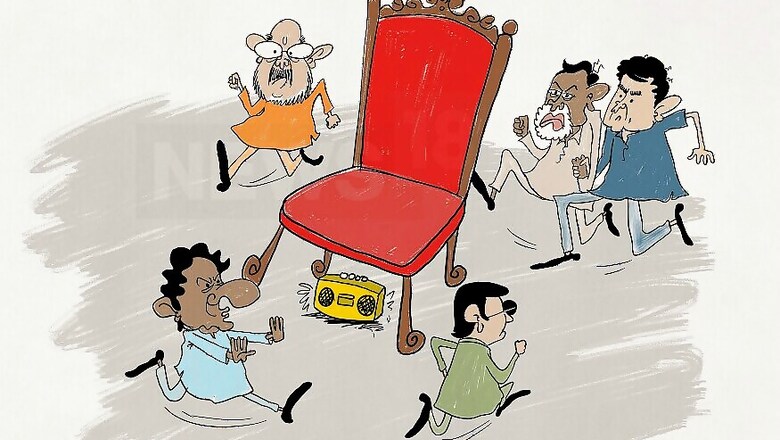
views
India electing its 17th Lok Sabha in 2019 may quite well be remembered in two very different versions. It is both another milestone in India’s electoral history and the cornerstone of new-age politics with regionalisation of the country’s political landscape.
This is also for the first time in the history of independent India that the Bharatiya Janata Party (BJP) is contesting from more seats than the Congress.
The BJP has fielded 437 candidates, while Congress nominees are contesting from 424 seats. However, beyond the battle between the two national parties, voters today are also split between a new wave — the one emerging from regional parties.
The Congress and BJP are in a direct contest in about 273 seats in states like Madhya Pradesh, Haryana, Maharashtra, Gujarat and Assam. The BJP faces a straight battle against regional parties in another 170 constituencies in states like Bengal, Uttar Pradesh and Odisha.
In the remaining 101 seats spread across states like Tamil Nadu, Andhra, Telangana, and Kerala, the BJP has negligible presence.
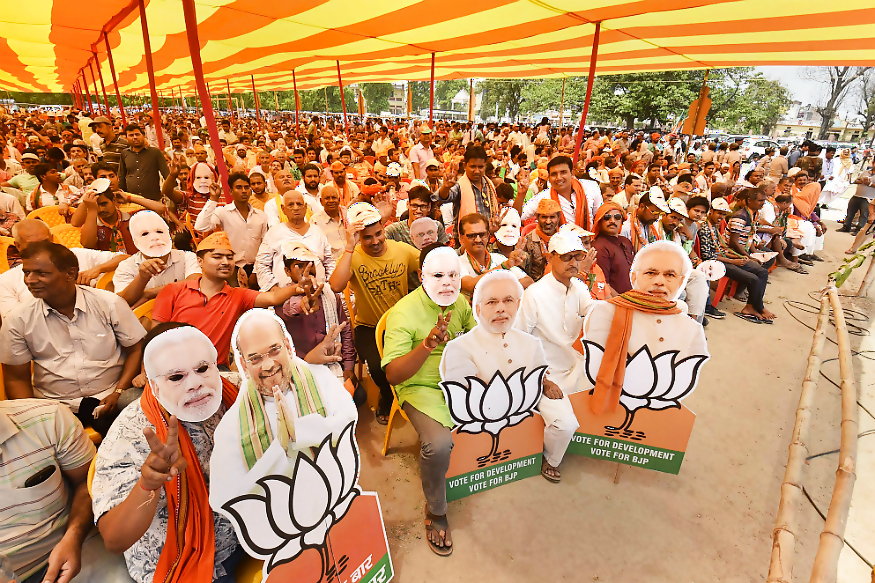
BJP supporters wear masks of Prime Minister Narendra Modi as they flash victory sign at an election campaign rally ahead of the Lok Sabha polls in Begusarai district (PTI)
Which of these two camps — the Congress or the regional — would be more successful in challenging the BJP’s growing footprint in 2019 is the point in question.
The battle, however, is not an easy one given the bid to match regional ideological differences with vote arithmetic. The opposition camp has the Congress and regional parties trying to exploit the arithmetic against BJP.
But, within this combined ‘offensive’, the grand old party is hoping to take the lead, despite the fact that regional parties hold the swing, especially in south India, in terms of share of seats and leadership.
Coalition Conundrum: Congress vs BJP
The emergence of five regional parties (or alliances) and their six leaders, over the five years of BJP government, has considerably changed the dynamics.
The Congress, struggling to strengthen nationwide presence with both seat-share and ideology, is hoping to woo support from regional overlords like Akhilesh Yadav, Mayawati, K Chandrasekhar Rao, Mamata Banerjee and Chandrababu Naidu.
Their parties in UP, Andhra, Odisha, West Bengal and Telangana cover over 140 seats (about 30% of the population).
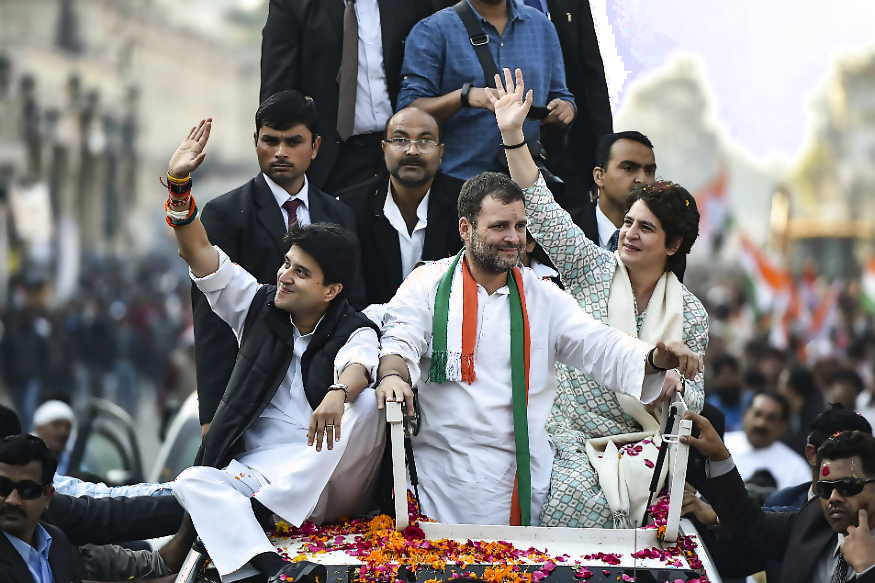
Congress President Rahul Gandhi with party general secretaries Priyanka Gandhi Vadra and Jyotiraditya Madhavrao Scindia during a roadshow in Lucknow (PTI)
Congress president Rahul Gandhi said his party’s primary aim in Uttar Pradesh was to defeat the BJP by supporting a “secular formation,” referring to the Samajwadi Party-Bahujan Samaj Party alliance.
However, the grand old party’s attempt to unite an opposition on ideological grounds is a move that came in late.
With regional parties gaining prominence nationally and in terms of votes, the Congress’ UPA game-plan feels threatened. There has been a year-long demand by leaders like Mamata Banerjee and Chandrasekhar Rao for a united opposition.
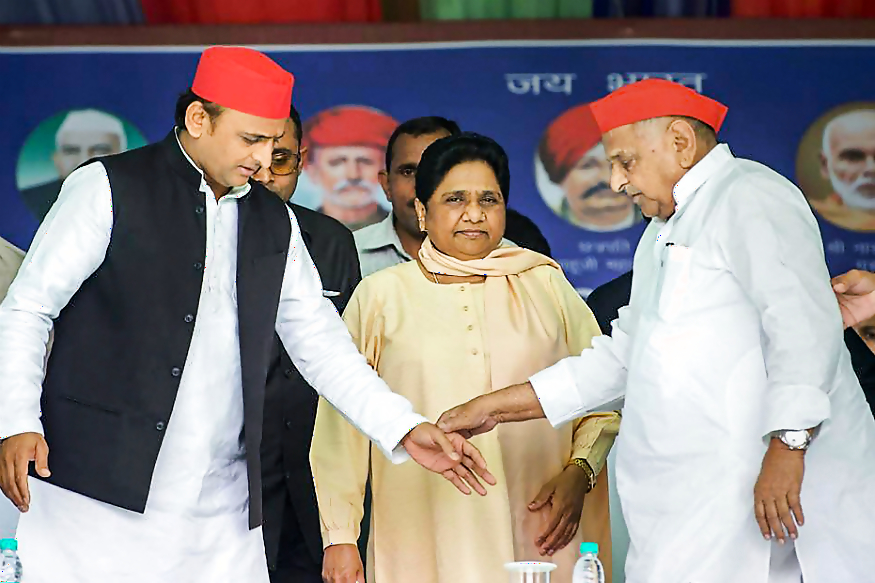
Samajwadi Party patron Mulayam Singh Yadav, his son and party president Akhilesh Yadav and Bahujan Samaj Party supremo Mayawati during their joint campaign rally in Mainpuri (PTI)
In addition, the Congress’ unwillingness to compromise on its image as a national party by first proposing a larger alliance with regional parties is earning itself a bad name.
For example, the party is cutting into the votes of the SP-BSP’s grand alliance by creating two principal oppositions for voters in seats where the contest is mostly between two camps (grand alliance and BJP).
Regional Roar: Satraps vs BJP
The BJP’s strategy to make up for any losses in UP and the entire Hindi heartland has taken the electoral battle from the centre to the east (from UP to Bengal) in a fiery showdown.
Modi has addressed the second-highest number of rallies in Bengal after UP, even at the cost of bittersweet alliances with the Shiv Sena (in Maharashtra) and JD-U (in Bihar).
The saffron party’s sloganeering in Bengal with ‘Vande Mataram’ and ‘Jai Shri Ram’ and its vocal opposition are indicative of the clash between two strong ideologies.
Mamata’s Trinamool Congress made way through the Congress between 1996 and 2014, while the defeat of the Left in 2011 in the hands of the TMC marked the rise of the BJP as the latter’s principal opposition.
The BJP‘s rush to win maximum number of seats in Bengal, thus, is a calculated move to make Bengal a stronghold given its trend of switching political allegiance based on ideologies.
In south, the Telegu Desam Party (TDP), Dravida Munnetra Kazhagam (DMK), Telangana Rashtra Samithi (TRS) and Janata Dal-Secular (JD-S) are all focused on the 101 seats where neither the BJP nor Congress hold much share.
Here, the regional parties have understood their provincial prowess. They are willing to join forces with a national party to defeat the BJP as long as they are given their due recognition. However, some of them are equally confident of forming their own front and taking the lead.
TRS chief Chandrasekhar Rao, who fancies a significant role for himself in the new government in Delhi, has been making overtures to other parties across the south.
Rao (or KCR as he is popularly known) recently held meetings with Kerala CM Pinarayi Vijayan and the JD(S) in Karnataka. He also met DMK’s MK Stalin, officially a Congress ally, on May 14.
He is competing with TDP chief Chandrababu Naidu to garner popular support as a prominent leader from the region.
The focal point in who emerges as the leader among the satraps is Mamata Banerjee. Her emphasis on “opposition solidarity” with her “United India” rally in Kolkata earlier this year attracted much interest from the south to join forces against the BJP into what could possibly become the United India Alliance (UIA).
With Naidu participating in a two-day campaign in Bengal supporting the Lok Sabha’s second-largest party, and Mamata reciprocating, KCR’s move to meet Stalin hints at a possibility that the TRS is hoping to join hands with the Congress to curb Naidu’s rise.
Another the dark horse among the southern satraps is KCR’s ally and Naidu’s key opposition in Andhra Pradesh, YSR Congress chief YS Jagan Mohan Reddy.
Ahead of the Assembly and Lok Sabha election results in AP, Reddy is gearing up to shift his party’s base in the state’s new capital, Amaravati, a move seen as a direct challenge to Naidu.
Nevertheless, regardless of who governs Andhra, the state will surely contribute a leader with control over significant seats towards a grand alliance.
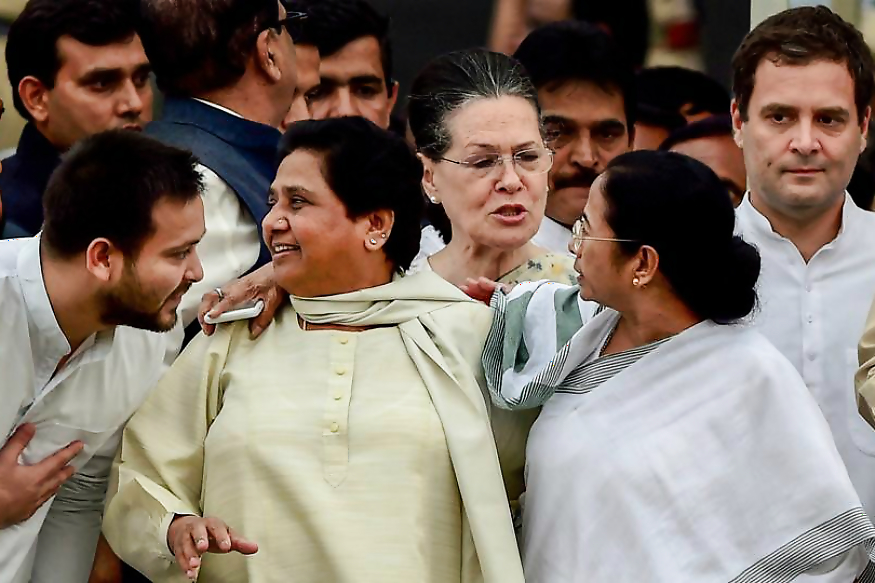
Tejashwi Yadav, Mayawati, Mamata Banerjee, Sonia Gandhi and Rahul Gandhi share a moment during the United India rally in Kolkata (PTI)
Many opposition parties are likely to meet two days after the last phase of polling on May 19 to discuss different combinations for government formation at the Centre. Whether the next Lok Sabha will be ruled by Congress-led UPA, BJP-led NDA or a possible UIA, will only be known after polls end.
What is certain, however, is that the India’s next Prime Minister is likely to be born out of a matured democracy of regional powers — a paradigm shift since Independence.













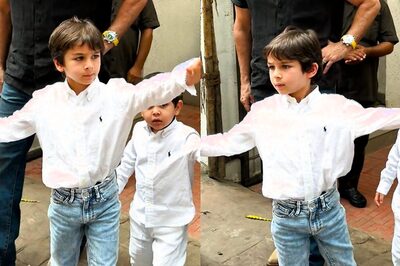






Comments
0 comment